The Making of Duels of the Planeswalkers: Interview with Wizards R&D Designer Ken Troop
A few months ago, we had the privilege of speaking with the CEO of Stainless Games, Patrick Buckland. Stainless developed every Duels game, but Patrick encouraged us to speak to Wizards for both sides of the series’ storied design.
Last week, we had the joy of posing some of our biggest Duels and MTG questions to Ken Troop. Ken is Digital Games Manager and an R&D Designer at Wizards of the Coast, so he was the perfect person to shed some light on the process of translating paper Magic to the popular Duels format.
Interview with Ken Troop, Digital Games Manager
T3: Ken, thank you for this opportunity. Please describe the Duels design team. How many people are involved (on the Wizards side), how do they interact with other departments (if applicable), and how did they get involved with Duels?
KT: Duels’ design is a number of different design groups. There is a feature design team who outlines the feature sets we want in Duels and what we want that player experience to be. There are deck-list teams who function very similarly to our “paper” design and development teams. They decide, given the goals of that year’s Duels, what the decks and encounters should be. They are also responsible for play-testing those decks for fun and balance.
We have an internal art director and visual UI designer who influence the user experience a great deal, and we also all have partners at Stainless who add their own creative energy to the project. Duels R&D tends to take point when it comes to cards and the high-level feature design, and Stainless tends to take point on everything else, which is a huge amount. It really takes a staggering amount of time and resources to make Duels.
One interesting thing to note is that Duels R&D operates the same as Magic R&D (which it is a part of) in that there aren’t dedicated Duels designers. All of us work on other digital and paper products and every year we have fresh faces on our Duels design teams, many of them coming from our “paper” side. We also have a few consistent faces in order to keep continuity of vision and experience.
T3: Most duels decks tend to be aggro and creature oriented, with fewer control and combo decks available. Is this distribution intended to help newer players, to keep games moving along, or to limit “unfun” situations?
KT: We look at Duels as an essential expression of Magic’s identity, especially for the new Magic players, and so it should be no surprise that our Duels deck design philosophy is derived from the philosophy we’ve been advocating on Daily MTG for the last few years, which is that creature combat is at the heart of fun Magic.
That said, we think about it more as “let’s create fun and resonant decks.” Talrand isn’t a creature deck. Jace isn’t a creature deck. Chandra, as with some others, can go some different ways. Ajani, Yeva, Nefarox…each of these have unique takes on creatures and different paths to winning. Many decks can go more control-oriented if desired. Ultimately, we wanted to make sure each deck in Duels 2013 can have different expressions, depending on play style preference.
Finally, while we recognize sometimes it’s fun to do quirky things via Panoptic Mirror, we also recognize that it’s really not fun to be on the other side of, say, Panoptic Mirror and Time Warp. So we try for a variety of decks, identities, and play styles.
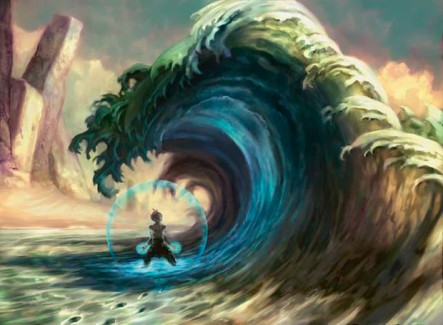
T3: Assuming Duels continues as a series, what are some long term design goals you’d like to meet (give players more variety of decks, show off more advanced card interaction, move matches along at a faster/slower pace, etc.)?
KT: We are always striving to create the best experiences for our fans, which involves listening to their feedback on the existing products and what kind of things they’d like to see in the future. As a designer, I look forward to listening to that feedback first.
T3: Duels does a great job of showing off cycles, like the Titans and Elemental Incarnations. However, Frost Titan and Guile have been conspicuously absent in all games – is there a reason they weren’t invited to the party?
KT: We’re often not focused on showing cycles in Duels. Much of the time players see three or four cards from a cycle in Duels, it’s because those cards fit the needs of what we’re trying to do in that deck. Also, the titans and elemental cycles are cool and powerful and color-iconic cards, which often make them good candidates for Duels, but we’re not thinking, “Oh, we happen to have 4/5 of a cycle, we need to find some way of getting in that fifth.”
Other times, if we don’t implement a card, it’s because of either technology limitations or time limitations. Frost Titan, for example, would have been exceedingly difficult to implement correctly in the time we had. Given the hundreds of cards we’ve done for Duels, we have had to limit the number of cards that would have resulted in a lot of extra time/work.
T3: How has Duels performed commercially, both in terms of digital game sales, as well as in terms of game-to-paper Magic conversions (if you can measure that)?
KT: I can’t comment on specific sales or conversion rates, but I will say that all one needs to do is look at the increasing frequency of release, the increasing platforms, and increasing quality of each Duels experience to get a sense of our confidence and excitement in the Duels franchise and its performance.
As for conversions, Magic is enjoying some of the best years of its existence. There are a number of contributing factors to Magic’s continuing increase in popularity, but Duels is certainly a major one.
T3: What are the balance goals when creating a Duels deck? Are there unspoken rules (like no turn 3 kills, no infinite mana, etc.) or other guidelines used to judge a deck’s power?
KT: Our first goal with any Duels deck is to make sure it’s fun and that it has a strong identity. Once that’s in order we spend time balancing the decks. The primary purpose for Duels is to provide fun single-player experiences. That said, we recognize that some people really enjoy Duels for PvP, and we do some amount of competitive play-testing. Ultimately, though, we find that players who enjoy the competitive aspect in Duels eventually move on to competitive formats in Standard in Organized Play and Magic Online, which is where R&D spends the most time and resources testing.
As for Duels-specific balancing, one of the easiest things to forget is how powerful synergy is in Duels compared to Standard. Because the card pool is much smaller and has many limitations than Standard, overall card quality can sometimes matter less than your cards naturally working well together, like Krenko’s goblin deck. Also, we have to be sensitive to speed in this format, as decks that naturally play strong and many early cards, like Odric and Krenko, have significant advantages.
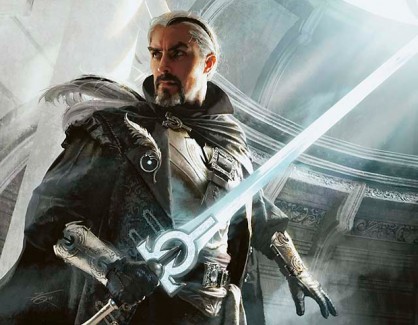
T3: Duels 2013 included many long-requested features, such as manual mana tapping, a true end step, and additional card unlocks. What changes in direction, thinking, or technology prompted these updates?
KT: While many players who enjoy Duels also enjoy paper Magic and Magic Online, we recognize that there are many players who use Duels as their primary Magic outlet, so we want to make sure that they feel Duels is getting better every year. Also, we learn more each year about what makes for a better Duels experience for our players, and we work hard to incorporate that feedback into the next version.
Historically, we were leery of Manual land-tapping and the end-step because we worried it would distract or confuse the newer player in our attempt to satisfy the more experienced player. Stainless really stepped up, though, and delivered implementations that we’re mostly invisible to new players and yet great for the audience that wanted this kind of extra detail.
T3: In every iteration of Duels, in-game code has led to leaks, including decklist leaks and, more recently, promo code leaks. Has this affected the way game content is planned and implemented? Do you view these leaks as negative spoilers, or as fortuitous generators of hype?
KT: There’s a lot of work that goes into how we’re going to reveal content early to our players, so it’s disappointing when content is revealed outside of that plan.
We always have to be aware of the possibility of unplanned leaks, which has certainly been a factor we’ve considered in our content decisions…but it’s only one amongst many such factors.
T3: From a personal standpoint, what are your most and least favorite decks from Duels, and why?
KT: Prior to D13, my favorite deck was Kiora’s blue/green ramp deck. So much fun, with early fun ramp cards like Explore and Coiling Oracle leading to Eldrazi and other fun finishers. In D13, I literally love all the decks. We spent a lot of time trying to get each deck doing fun and unique stuff, which I think really shows through. I’ve naturally unlocked all 30 cards in all 10 decks, (and am halfway through doing the same for the expansion) which is a testament to how enjoyable the product is.
If I had to rank the 10 decks for personal favorites, I’d probably go – Yeva, Jace, Talrand, Ajani. Then I’d say – Garruk, Odric, Liliana, Nefarox, Krenko, Chandra.
T3: One of the most frequent requests from Duels is open deck building. We understand that this feature would generally destroy the primary game’s balance, but would you consider the possibility of a separate, custom-deck only play mode in a future release?
KT: I can’t speak to any plans we have for future Duels releases, but we’re certainly always looking at new and fresh features we can potentially include.
T3: What are some of the designers’ favorite real-life decks?
KT: I don’t play a lot of constructed in paper or Magic Online, vastly preferring draft and sealed. When I do play constructed, I lean towards a Boros-style deck.
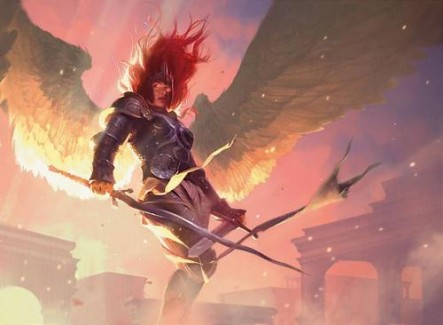
T3: After Archenemy and Planechase, Commander seems like a natural inclusion for the next Duels game. While we don’t expect you to confirm that (though you’re certainly welcome to), what would be the design challenges associated with Commander’s inclusion in a future Duels game?
KT: We’ve discussed Commander in the past and decided against it, despite it being a great game experience. It’s just such a new-player unfriendly experience – the 100 card decks, the singleton rule, the general power level and complexity of the typical cards in the format – all of that makes for a potentially bewildering experience for new players.
T3: What are some notable cards that were cut from Duels during the design process, and why?
KT: I tend not to remember the cards we cut, because generally we get the cards we really want and are cutting cards that are more incidental to the deck’s design.
T3: To the casual observer, it seems that Duels DLC decks could “easily” be pumped out at a much more frequent rate. What determines the release schedule of DLC?
KT: I appreciate that it can seem “easy” to the outside world, but there’s a lot of work that goes into each deck, and testing it for fun and balance. Also, at any given point in the year, we’re reviewing and analyzing the game that’s live, we’re hard at work on the game about to be released, and we’re planning for the game that’s 1-2 years out. And, even if we could pump out tons more decks, those cards have to be coded, their interactions tested. Finally, we want to make sure that each deck we do in Duels has a strong, unique, and fun identity, which means we run the risk of making DLC that’s bad, and that is not an option. So we’re on the DLC schedule we are for good reasons.
All that said, we’re always exploring new ways to get content out to our players, so perhaps there could be changes in the future. :)
T3: What makes a good Duels deck? Are there certain themes, mechanics, or interactions that you strive to demonstrate to players?
KT: Each year we’ve highlighted a few key concepts. First, the core set in general. Duels 2013 was designed to be more closely integrated with the Magic 2013 Core Set. Second, we always want to include the Core Set Planeswalkers, and as that lineup has changed slightly from year to year, so has the Duels Planeswalker lineup. Finally, we have highlighted recent sets moreso than older sets, just to make things as comfortable as possible for new players when they seek to explore other forms of Magic.
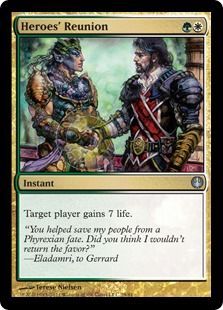 Thanks & closing
Thanks & closing
Ken’s answers were more thorough and thought-provoking than we could have ever hoped for.
On behalf of Top Tier Tactics and the Duels of the Planeswalkers communities, I’d like to thank Ken Troop and his team for their work on this series and his time today. ~WiNGSPANTT
Looking for more Duels of the Planeswalkers articles? Check out our full list of deck guides, card lists, and interviews to learn more about this strategy gaming series.

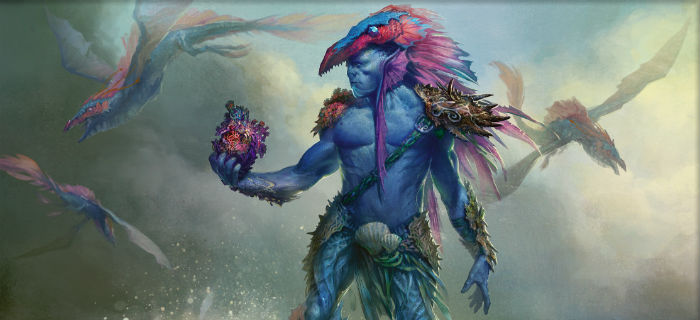
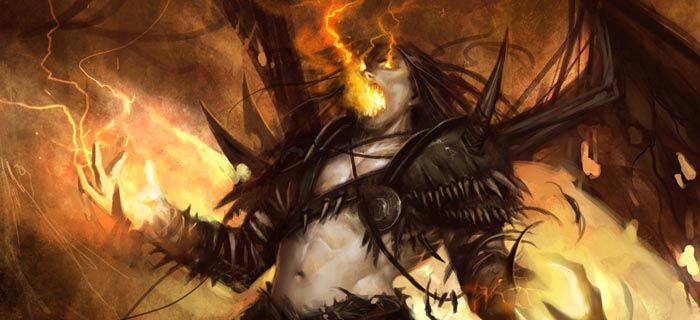




Really interesting, good interview Wing!
Badass interview Wing, keep up the good work bro.
Thanks for the interview, Wing!
I’m 29 years old and I never got into Magic until Duels 2013. Nice to know that the developers know what’s up and I look forward to more DLC to feed my new obsession!
I know personally as a DotP player I want to see a more polished product (aka, less bugs) and more content more often. ;)
I agree with everyone else so far, this was a really good and insightful interview. Keep up the good work!
Thanks, glad you enjoyed it!
Really loved the interview. Makes me realize DotP it’s not something they just do on the side, so to speak. Saw one small grammatical error though. :P
Have played and loved all 3 versions of DOTP. But I really wish they would implement a “random” option when choosing a deck to play for the AI in single player, rather than having to choose the deck the computer will use or close my eyes while cycling the selection so it’s semi-random.
I agree 100%. I also wish you could select either campaign or revenge versions of the deck in free for all games.
Pass and play for iPad would be killer as well while I am wishing.
hey wing, do you know how the dotp 2013 leaderboard ranking system works? for 1v1, 2HG, 3 and 4 player etc. thanks!
For the sp, no idea. For multiplayer it uses Microsoft’s TrueRank algorithm. Look it up, it’s quite fascinating.
that was way more diverse than i would have ever imagined. thank you for sharing.
[…] the past, Magic designers told T3 they weren’t interested in EDH/Commander since it could alienate new players. But if there’s one thing new players love, it’s […]
The often satirical take on political issues, mixed with a healthy dose of sarcasm,
is still something that no other punk band has managed to replicate.
An army of 100 soldiers can withstand the approach of five
hundred to even a thousand or more people, but not 5000 thousand; ten thousand or
more. It’s a baby blue with a, oh, a yellow handle with a spill-proof yellow lid.